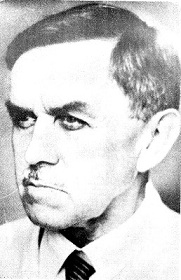Ethnographer. Born Jena (Thuringia, Germany) 17 April 1883, died Santa Rita (Brazil) 10 (?) December 1945. Orphaned from the first year of his life, Unckel was brought up by his grandmother in Jena, and at age 16 entered the factory of Carl Zeiss there as mechanics apprentice. Social welfare and educational opportunities offered by his employer fostered Unckel's intellectual interests, inspite of a lack of formal graduation from highschool. In 1903 he emigrated to Brazil and two years later he was already fully immersed in ethnographic research among Guaraní Indians in Southern and Southastern Brazil. A subgroup of Apapocuvá-Guaraní adopted him into their tribe and gave him the Indian name "Nimuendajú" which he henceforeward used as his second name, droping his birthname "Unckel". This field work also resulted in one of his major and most influential monographs ("Die Sagen..“ in: Zeitschrift für Ethnologie). An untyring fieldworker until his death, Unckel studied, collected artifacts and published substantially on 50 different Indian tribes of Brazil. His outstanding ethnographic skills were recognized by leading institutions.
The ethnographical museums at Göteborg (Sweden) Leipzig (Germany), Dresden (Germany) and Hamburg (Germany), the Carnegie Institution of Washington, and the University of California at Berkeley (in this chronological sequence) commissioned artifact collections, monographs and general research by Unckel. From these commissions he made his and his wife's living in Belém do Pará. When in 1934 his German patrons where not able or willing to continue the cooperation, it was of great help that through the good services of Robert H. Lowie [1883-1957] of the University of California at Berkeley, Unckel was selected as contributors to the Handbook of South American Indians. He contributed thirteen tribal monographs to the Handbook, translated from the German or Portuguese original, edited and sometimes co-authored by Lowie. The cooperation with Lowie lasted throughout the last decade of Unckel's life and produced further important monographs (e.g. "The Tukuna"). Unckel's most influential study is his early research on the decline of traditional nativism among the Tupí-Guaraní and its aforementioned publication in „Zeitschrift für Ethnologie“. This was the base for several subsequent studies by Alfred Métraux's [1902-1963] and his comprehensive monograph on pre-columbian migratory movements in Lowland South America ("Migrations historiques des Tupi-Guarani", in: Journal de la Société des Américanistes de Paris, n.S. 19: 1-45, Paris 1927), and by Egon Schaden [1913-1991] ("Paradiesmythen im Leben der Guaraní-Indianer", in: Staden Jahrbuch 3: 151-162, São Paulo 1955). Unckel's monograph still stands as the classic case study for the theory of Nativism (cf. W. E. Mühlmann "Chiliasmus und Nativismus", Berlin 1961").
Unckel must also be credited with discovery and first adequate description of the complex dual social organization, age sets and secret societies among the Gê Indians of Eastern Brazil which where only superficially known and thought to be socially "primitive" as a correlate of their foraging mode of life and the reduced group sizes. His field methods are outstanding in their balace between "going-native" and rigorous observation and documentation (including material, intellectual, social and linguistic aspects) and through the fact that he re-studies many tribes over an extended period of time.
(text written by Berthold Riese; photo source: http://www.georgezarur.com.br/artigos/182/o-mapa-etno-historico-de-curt-nimuendaju)



